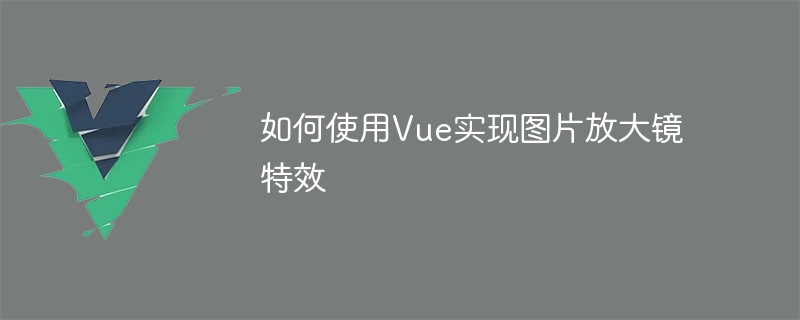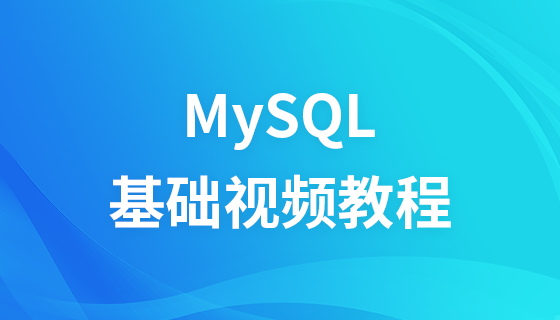
如何使用Vue实现图片放大镜特效
引言:
随着互联网技术的不断发展,图片在我们的日常生活中扮演着越来越重要的角色。为了提升用户体验和视觉效果,图片放大镜特效被广泛地应用于网页设计中。本文将介绍如何使用Vue框架实现一个简单的图片放大镜特效,并给出具体的代码示例。
一、准备工作:
在开始之前,请确保你已经正确安装了Vue框架并创建了一个Vue项目。
二、组件设计:
我们将使用Vue的组件化思想来实现图片放大镜特效,组件可以提高代码的复用性和可维护性。在这个示例中,我们需要创建两个组件。
立即学习“前端免费学习笔记(深入)”;
<template>
<div class="main-image">
<img :src="imageSrc" ref="mainImg" @mousemove="onMouseMove" @mouseenter="onMouseEnter" @mouseleave="onMouseLeave">
<div class="magnifier" v-if="showMagnifier" :style="{backgroundImage: 'url(' + imageSrc + ')', backgroundPosition: bgPos}"></div>
</div>
</template>
<script>
export default {
props: {
imageSrc: {
type: String,
required: true
}
},
data() {
return {
showMagnifier: false,
bgPos: '',
}
},
methods: {
onMouseMove(e) {
const img = this.$refs.mainImg;
const rect = img.getBoundingClientRect();
const x = e.clientX - rect.left;
const y = e.clientY - rect.top;
const bgPosX = x / img.offsetWidth * 100;
const bgPosY = y / img.offsetHeight * 100;
this.bgPos = `${bgPosX}% ${bgPosY}%`;
},
onMouseEnter() {
this.showMagnifier = true;
},
onMouseLeave() {
this.showMagnifier = false;
}
}
}
</script>
<style>
.main-image {
position: relative;
}
.main-image img {
max-width: 100%;
}
.magnifier {
position: absolute;
z-index: 99;
width: 200px;
height: 200px;
border: 1px solid #ccc;
background-repeat: no-repeat;
}
</style><template>
<div class="thumbnail">
<div v-for="image in thumbnailList" :key="image" @click="onThumbnailClick(image)">
<img :src="image" alt="thumbnail">
</div>
</div>
</template>
<script>
export default {
data() {
return {
thumbnailList: [
'https://example.com/image1.jpg',
'https://example.com/image2.jpg',
'https://example.com/image3.jpg'
],
currentImage: ''
}
},
methods: {
onThumbnailClick(image) {
this.currentImage = image;
}
}
}
</script>
<style>
.thumbnail {
display: flex;
}
.thumbnail img {
width: 100px;
height: 100px;
margin-right: 10px;
cursor: pointer;
}
</style>三、页面布局:
在这个示例中,我们需要在根组件中引入主图组件和缩略图组件,并分别通过props来传递图片的地址。以下是一个简单的页面布局示例:
<template>
<div class="wrapper">
<main-image :imageSrc="currentImage"></main-image>
<thumbnail></thumbnail>
</div>
</template>
<script>
import MainImage from './MainImage.vue';
import Thumbnail from './Thumbnail.vue';
export default {
components: {
MainImage,
Thumbnail
},
data() {
return {
currentImage: ''
}
},
mounted() {
// 设置默认的主图地址
this.currentImage = 'https://example.com/defaultImage.jpg';
}
}
</script>
<style>
.wrapper {
display: flex;
justify-content: space-between;
align-items: center;
}
</style>总结:
通过以上的代码示例,我们可以看到如何使用Vue框架来实现一个简单的图片放大镜特效。主图组件负责展示原始图片和处理鼠标移动事件,缩略图组件负责展示缩略图列表并切换主图。将这两个组件结合起来,并在根组件中引入,即可达到图片放大镜特效的效果。希望本文对你理解如何使用Vue实现图片放大镜特效有所帮助。
注:以上代码示例为简化版本,实际使用时可能需要根据具体需求进行调整和扩展。
以上就是如何使用Vue实现图片放大镜特效的详细内容,更多请关注php中文网其它相关文章!

每个人都需要一台速度更快、更稳定的 PC。随着时间的推移,垃圾文件、旧注册表数据和不必要的后台进程会占用资源并降低性能。幸运的是,许多工具可以让 Windows 保持平稳运行。




Copyright 2014-2025 https://www.php.cn/ All Rights Reserved | php.cn | 湘ICP备2023035733号